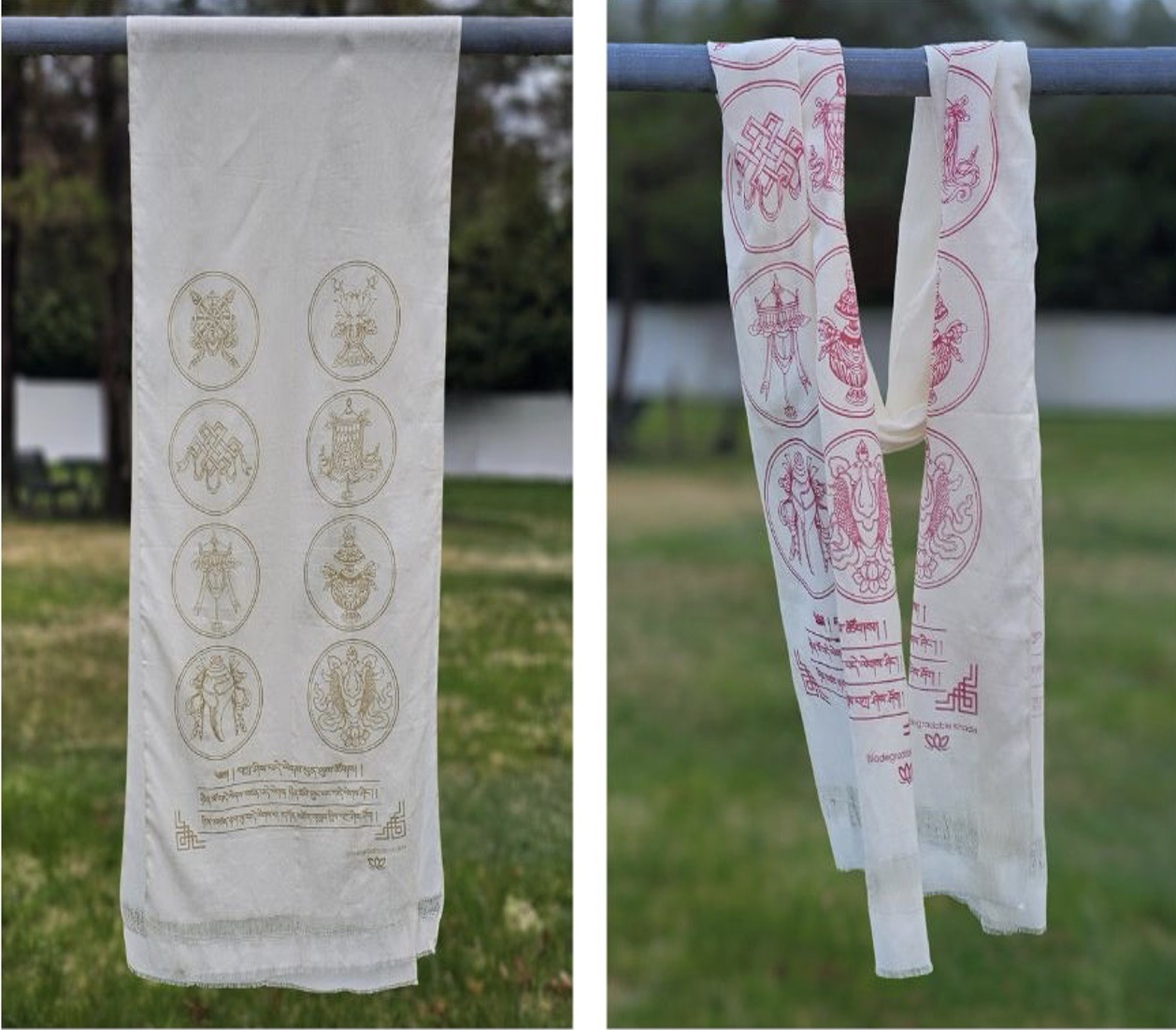Description
What are Khata and Lungta made of?
Traditionally both khatas and Lungtas back in the days were made of sheep's wool or pure cotton and silk. However lately, they are overwhelmingly made of Polyester,which is ofcourse a completely synthetic material. Most of them, according to data collected by tricycle.org, are manufactured in a place called Ranyi township, outside Chengdu, in southwest China.
Introducing Eco- friendly, Biodegradable Khatas and Lungtas
In our sincerest attempt in reducing the community's carbon footprint we introduce our biodegradable khatas and lungtas that are environment friendly. These are made of pure cotton and unlike the synthetic material it is easy to decompose.
Each Khata comes decorated with Tashi Tagye (eight auspicious Buddhist symbols). While our lungta comes with 25 flags and measures nine metres long. The thread that binds the flag is made using sisal.
Finally, with this approach we are not only drawing everyone's attention towards the environmental issue but we are also reminding our communities that follow Tibetan Buddhism of our age old traditional practices that were actually eco-friendly.
So let us join hands together in bringing those practices back for a better future.








